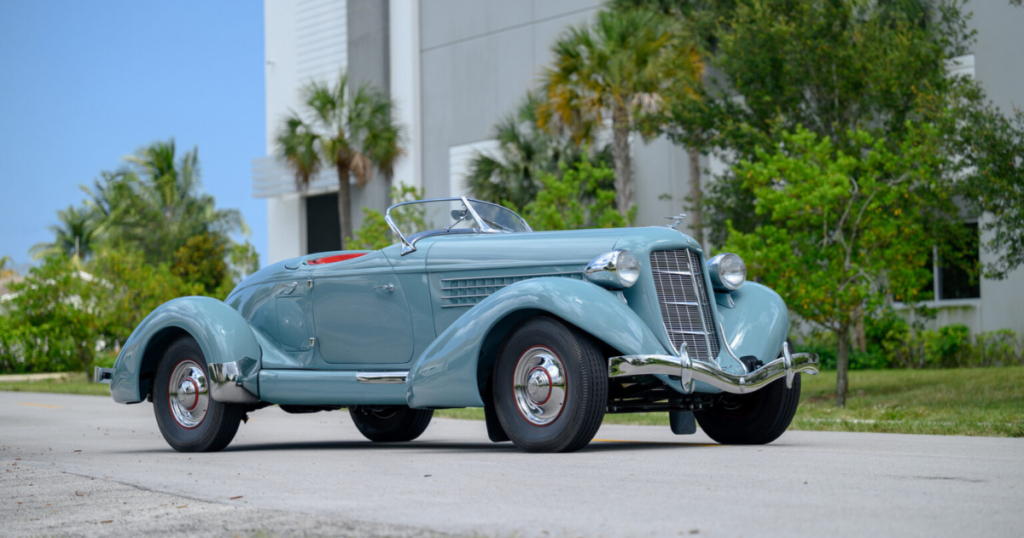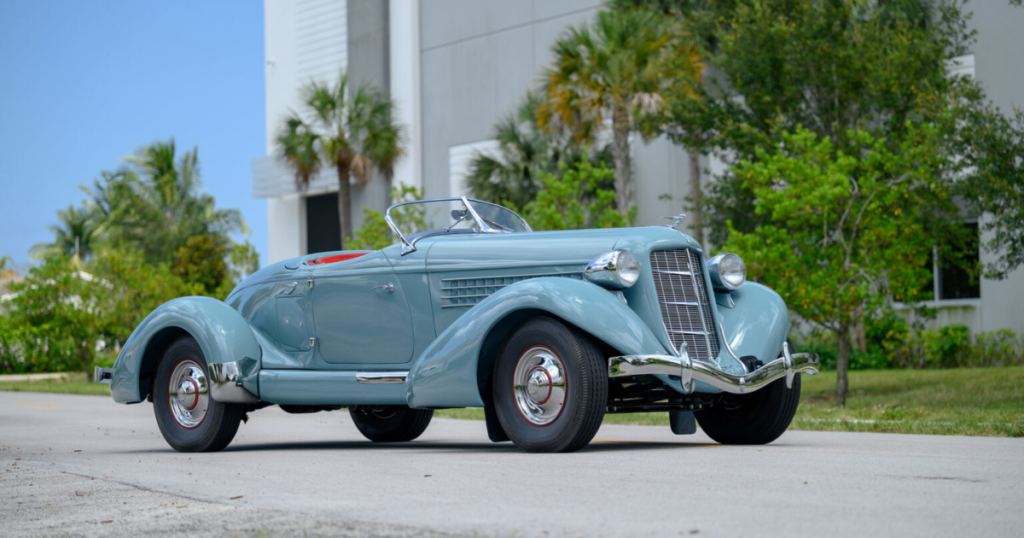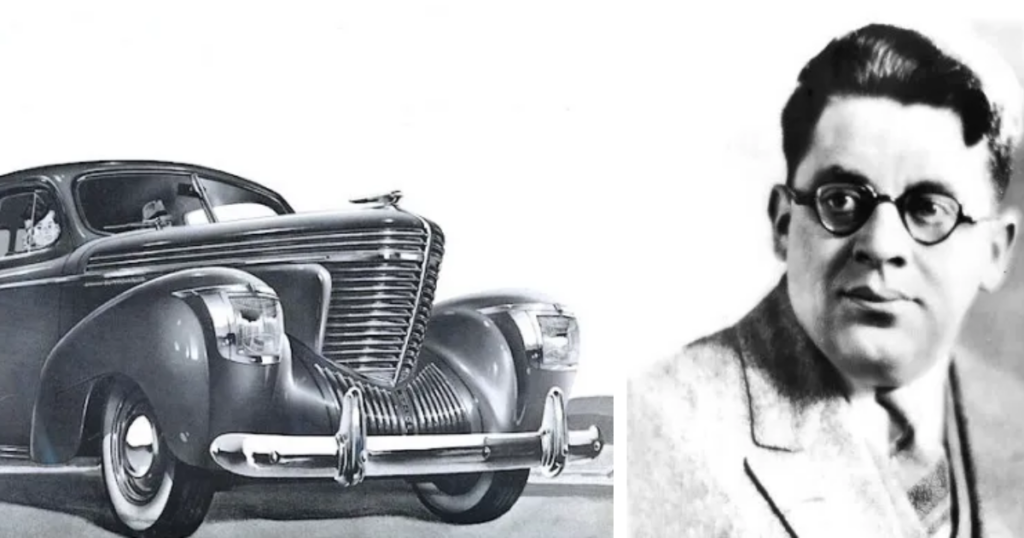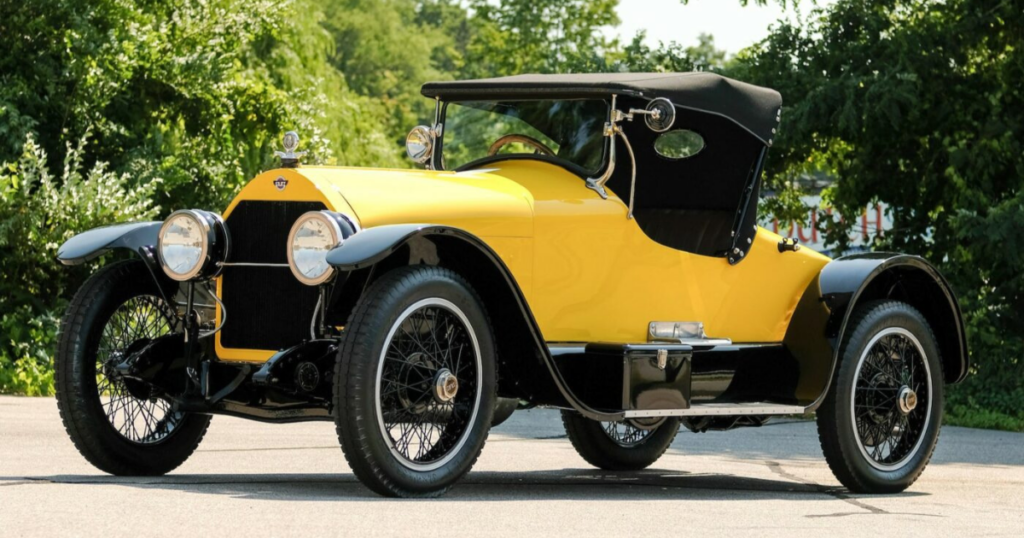
During an era when Bugattis raced across France, and 4½-Litre Bentleys tore through the British countryside, the American automotive equivalent was the Auburn speedster. The Auburn Automobile Company, based in Indiana, introduced its first rendition of this striking body style in 1928, drawing inspiration from a Duesenberg show car. This captivating design would see various iterations until the end of production in 1936.

The 1935–1936 speedsters, which were designed by Gordon Buehrig, broke new ground with their sleek bodies that had a straight hood line, a vee-shaped windshield, and a unique Boattail back design. These cars, which have pontoon fenders and beautiful chrome trimmings, are timeless classics of car design.

The speedster had the exciting mechanics of supercharged Auburn cars under its hood, including a Columbia dual-ratio rear axle. Because of its unique axle, the driver could easily switch between gear ratios at low speeds, making it perfect for handling both city streets and country lanes. It truly became a “driver’s car.”

The 1935-1936 Auburn Speedsters, a testament to Gordon Buehrig’s design brilliance, not only dazzled with their exterior elegance but also housed technological innovations that set them apart in the automotive landscape of their era.
One such feature was the innovative “Goddess” hood ornament, a striking Art Deco-inspired figure adorning the front of the Speedster. This emblematic mascot not only added a touch of sophistication but also symbolized the spirit of speed and grace inherent in these exceptional vehicles.

The heart of the 1935-1936 Auburn Speedster was its potent supercharged engine, a 280-cubic-inch inline-eight that roared with 150 horsepower. Fitted with a Schwitzer-Cummins centrifugal supercharger, this powerplant not only delivered an exhilarating performance but also solidified the Speedster’s status as a pre-war racing legend.

Inside the cockpit, the driver was treated to a dashboard that combined functionality with artistic flair. The instrument cluster, surrounded by a beautiful array of chrome bezels, featured a comprehensive set of gauges, reflecting the meticulous attention to detail in the design process.
The speedometer, prominently placed in the center, became a focal point, emphasizing the car’s performance-oriented nature.

The Boattail Speedster was good at reducing drag, not just because of how it looked. The “Swing-Grip” steering system, which was hidden under the hood’s gracefully sloping top, made driving more enjoyable. The steering column could pivot with this system, which made getting in and out of the car easy.
This new design was not only useful, but it also added a bit of class to the driving experience. This is typical of the Auburn brand’s dedication to both form and function.

The Auburn Speedster is remembered as a sign of progress and style from an important era in the history of cars. Beautifully restored models take automobile enthusiasts back to a time when style and speed came together in the famous Boattail Speedster, leaving an indelible mark on classic cars.



